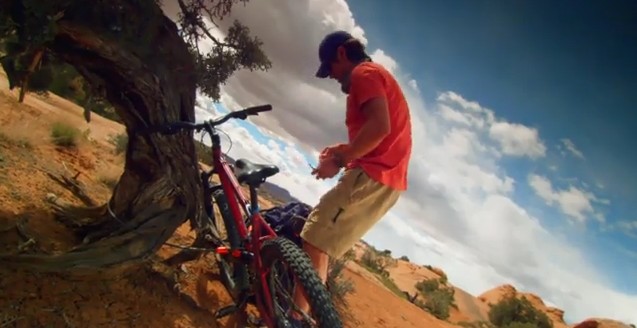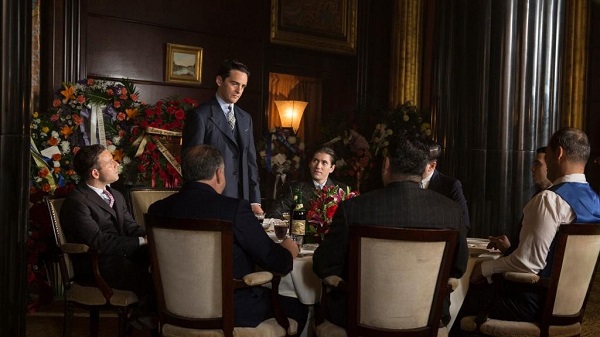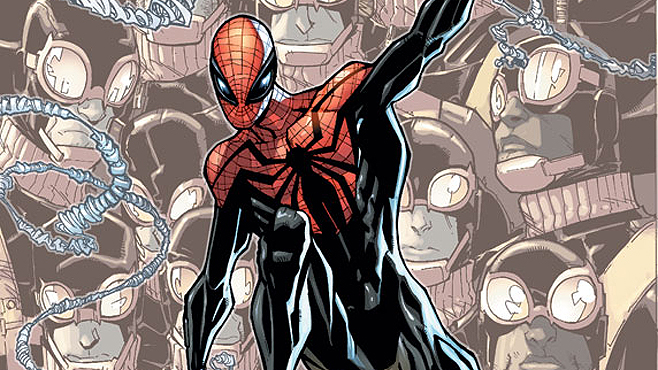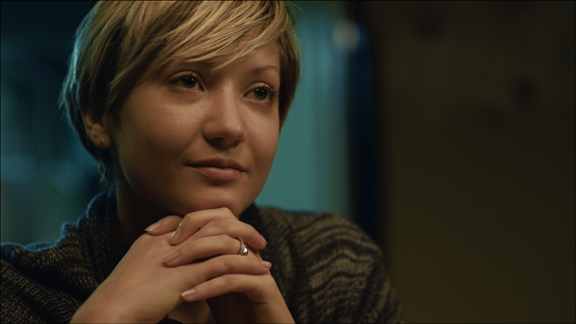127 Hours
Directed by Danny Boyle
vs.
Buried
Directed by Rodrigo Cortes
How does one make a filsimply about a man stuck in a small space, and nothing more?
There have been two movies released this year which take place entirely (or almost entirely) in a confined space wherein a man is trapped and fighting for his life. The first is from director Danny Boyle. In his follow-up to the immensely successful, Academy Award winning Slumdog Millionaire, Danny Boyle tells a powerful and compelling story of one man’s will to survive, A true story of a mountain climber’s remarkable adventure to save himself after his right hand was crushed and trapped by a boulder during a freak accident. Over the next five days our protagonist (James Franco) examines his life and finds the courage to finally free himself by any means necessary.
The second film is Buried, a first time feature by Spanish director Rodrigo Cortés. Paul Conroy (Ryan Reynolds), a truck driver and family man, wakes up buried alive in an old wooden coffin. Not knowing who might have put him there or why, his only chance to escape from this nightmare comes way of a cell phone accidentally left behind. Paul only has only 90 minutes to be rescued but poor reception, battery life and lack of oxygen become his biggest enemies in a race against time.
The Script:
Danny Boyle, reteaming with screenwriter Simon Beaufoy (Slumdog Millionaire), carefully adapts Ralston’s memoir “Between A Rock And A Hard Place” without bending the truth too much. In  taking what was very much an interior dialogue, they find new ways to open it up by using flashbacks of Aron’s past, hallucinations, and dream sequences as he drifts into fantasies of possible escape.
taking what was very much an interior dialogue, they find new ways to open it up by using flashbacks of Aron’s past, hallucinations, and dream sequences as he drifts into fantasies of possible escape.
Another method in Boyle’s arsenal is switching between third and first person point-of-view as Aron records his thoughts with the camcorder he brought along. The video diary (something Ralston actually recorded in real life) helps us better understand what he must have felt as every attempt to move the boulder fails, as his water supply starts to run out. These testimonials are the heart of the film – “I wish I had returned all of your phone calls,” Franco says to his mother at one point when keeping a log of his situation. Along with a bird that flew above in the mornings, the camera was Ralston’s only external relationship.
 Cortés keeps true to his word and delivers everything the premise (or gimmick) promises. Cortes doesn’t cheat by employing flashbacks or other devices that would take the action beyond the grave. The film’s chief virtue is that it remains true to itself – there are no devious cutaways or flashbacks outside the box. All Cortes has to work with are the cell phone calls Paul Conroy makes in hope that it someone might locate him. While these phone conversations help flesh out the plot, they also allow us to learn more about Paul’s work, background, family and his current situation.
Cortés keeps true to his word and delivers everything the premise (or gimmick) promises. Cortes doesn’t cheat by employing flashbacks or other devices that would take the action beyond the grave. The film’s chief virtue is that it remains true to itself – there are no devious cutaways or flashbacks outside the box. All Cortes has to work with are the cell phone calls Paul Conroy makes in hope that it someone might locate him. While these phone conversations help flesh out the plot, they also allow us to learn more about Paul’s work, background, family and his current situation.
Unfortunately the script plants too many things in the coffin along with our protagonist. Touching upon provocative, timely political issues, Cortéz’s film desperately tries to capture all the hypocrisy, and nonsense of America’s current entanglement in the Middle East; This commentary on bureaucracy and foreign policy just doesn’t work. What does work is the running gag concerning technology. Paul’s efforts to communicate are hindered by poor cellphone reception, answering machines and inane phone operators who repeatedly put hm on hold or transfer him to voice mail. While technology is supposed to make communication easier, it actually makes it increasingly more difficult.
127 Hours is a true story. Boyle does already have something to work with, but he keeps it simple. Buried is at times silly, over-stuffed and suffers from a disappointing ending.
Rescue & Supply:
Both films offer our protagonist a limited number of supplies which they can potentially use to aid in their escape. In Buried, Reynolds is given a cell phone, a pencil, a Zippo lighter, glow sticks, a flashlight and some alcohol. In 127 Hours, James Franco is left with a half-full container of water, a few snacks, some mountain climbing equipment, a small pocket knife and a video camera. These components, coupled with actors willing to go to the nth degree in their performance, is all the directors have to work with, but they make the utmost use of them.
Production Values:
127 Hours:
Cinematographers Enrique Chediak and Anthony Dod Mantle are at the top of their game once again, taking complete advantage of every little space Franco occupies. Using the Slumdog Millionaire  SI-2K camera, the audience spends a good portion of the 94-minute film trapped alongside Ralston in the narrowest of places as Franco climbs up, down and through the canyon. They rely on two cameras, multiple angles, sharp cuts, and when needed, rapid-fire editing to take what could have been static and dull into something expeditious and inspiring. Through the heightened sound of a tape rewinding or putting the camera inside Franco’s ever depleting water bottle as he searches for the last drop, Boyle arranges sight and sound in ways to transport smell, touch, and taste.
SI-2K camera, the audience spends a good portion of the 94-minute film trapped alongside Ralston in the narrowest of places as Franco climbs up, down and through the canyon. They rely on two cameras, multiple angles, sharp cuts, and when needed, rapid-fire editing to take what could have been static and dull into something expeditious and inspiring. Through the heightened sound of a tape rewinding or putting the camera inside Franco’s ever depleting water bottle as he searches for the last drop, Boyle arranges sight and sound in ways to transport smell, touch, and taste.
Credit is surely due to editor Jon Harris (Snatch, The Descent, Stardust, Kick-Ass), who packs a sense of urgency into every frame perfectly, cutting his material together with ease. He chops away with hyperactive split-screen montages, bursts of colour, layers of sound design and even alters the speed from the first frame to the last. The film’s 90-odd minutes are nothing short of visually stunning, technically astounding and emotionally resonant. Slumdog collaborator A.R. Rahman once again turns in a superb score that is constantly evolving and connecting with the images and urgency of the situation.
Buried:
 Shooting in widescreen (believe it or not), director Rodrigo Cortes immediately begins where The Vanishing left off – in total darkness and inside a coffin. But Buried doesn’t dig as deep into dread as the The Vanishing did, nor does it hold a candle to the “coffin scene” in Kill Bill Vol. 2. In those films, the burial scenes were short and surprising, whereas everyone walking into Buried already knows what to expect.
Shooting in widescreen (believe it or not), director Rodrigo Cortes immediately begins where The Vanishing left off – in total darkness and inside a coffin. But Buried doesn’t dig as deep into dread as the The Vanishing did, nor does it hold a candle to the “coffin scene” in Kill Bill Vol. 2. In those films, the burial scenes were short and surprising, whereas everyone walking into Buried already knows what to expect.
Buried is, however, a marvel of cinematic minimalism. Cortéz finds ways to make it all more interesting with varied camera angles, and different instruments that Reynolds finds to light up the set. Cinematographer Eduard Grau does a stellar job in conveying the inner limits of Paul’s tiny prison – the flame from a lighter, the light from a cell phone screen, the illumination of some glow-sticks, he restricts his lighting to whatever sources of illumination Paul has at his disposal. Unfortunately the claustrophobic feel is at times lost when Cortéz occasionally ‘cheats’, zooming the camera out to show impossible shots of Paul from a distance. Credit is also due to the expertly mixed sound design, the scintillating score by Víctor Reyes and the pulchritudinous “Saul Bass” credit sequence, all of which is enough to distract you from a wavering screenplay.
Acting:
Franco has never been more alive than he is here. His extraordinary portrayal of the famed adventurer is a tour-de-force performance. For long stretches, it’s a one man show and Boyle helps stretch the actor’s extraordinary talents  to their fullest. His transformation from confident and charming to emotions of shock, fear, anger, and heartbreak is remarkable and Oscar-worthy.
to their fullest. His transformation from confident and charming to emotions of shock, fear, anger, and heartbreak is remarkable and Oscar-worthy.
Buried would not be as effective as it is without the performance of Ryan Reynolds, who sheds his clean-cut image for a darker role. Reynolds has never been a deep actor, but here he captures every emotion that flickers across his face.
Both actors are at the top of their game, but Franco plays along side the pros while Reynolds is still batting the minors. However, Reynolds spends the entire running time alone where-as Franco is awarded several scenes with other players that help identify his personality. It also doesn’t help that Reynolds is given less convincing dialogue to work with.
Conclusion:
Buried is about atmosphere and mood, and feeling what it might be like to be trapped in the coffin with the actor, but 127 Hours is much more.
 The final 15 minutes of gut-wrenching terror in 127 Hours is far more terrifying and emotionally powerful than the entire 94 minutes of Buried. In Buried, rather than making a serious and realistic effort to break out of his shallow grave, Conroy carries on endless phone conversations with unseen parties. Meanwhile, back in Utah, James Franco is sawing off his arm and using only a pocket knife to do so. 127 Hours builds to a climax of profound human determination and profound physical pain offering inspiration, exasperation and blunt realization in a true story of one young man’s will to survive. So strong was his will that he would do anything necessary. Everyone knows how 127 Hours ends, but the biggest trick for Buried is to keep people from spoiling the ending.
The final 15 minutes of gut-wrenching terror in 127 Hours is far more terrifying and emotionally powerful than the entire 94 minutes of Buried. In Buried, rather than making a serious and realistic effort to break out of his shallow grave, Conroy carries on endless phone conversations with unseen parties. Meanwhile, back in Utah, James Franco is sawing off his arm and using only a pocket knife to do so. 127 Hours builds to a climax of profound human determination and profound physical pain offering inspiration, exasperation and blunt realization in a true story of one young man’s will to survive. So strong was his will that he would do anything necessary. Everyone knows how 127 Hours ends, but the biggest trick for Buried is to keep people from spoiling the ending.
Ricky D






